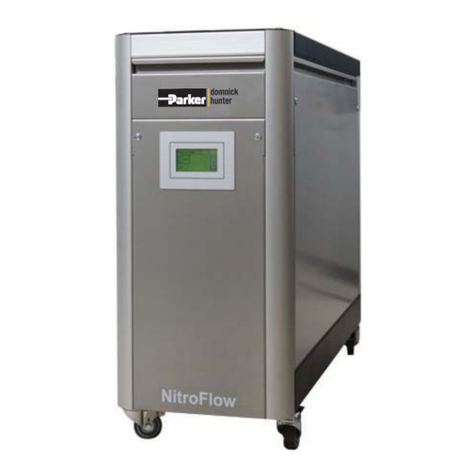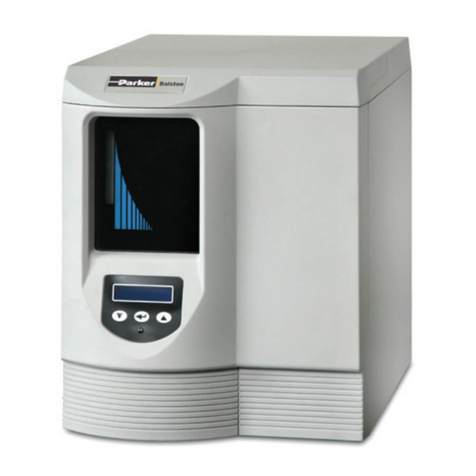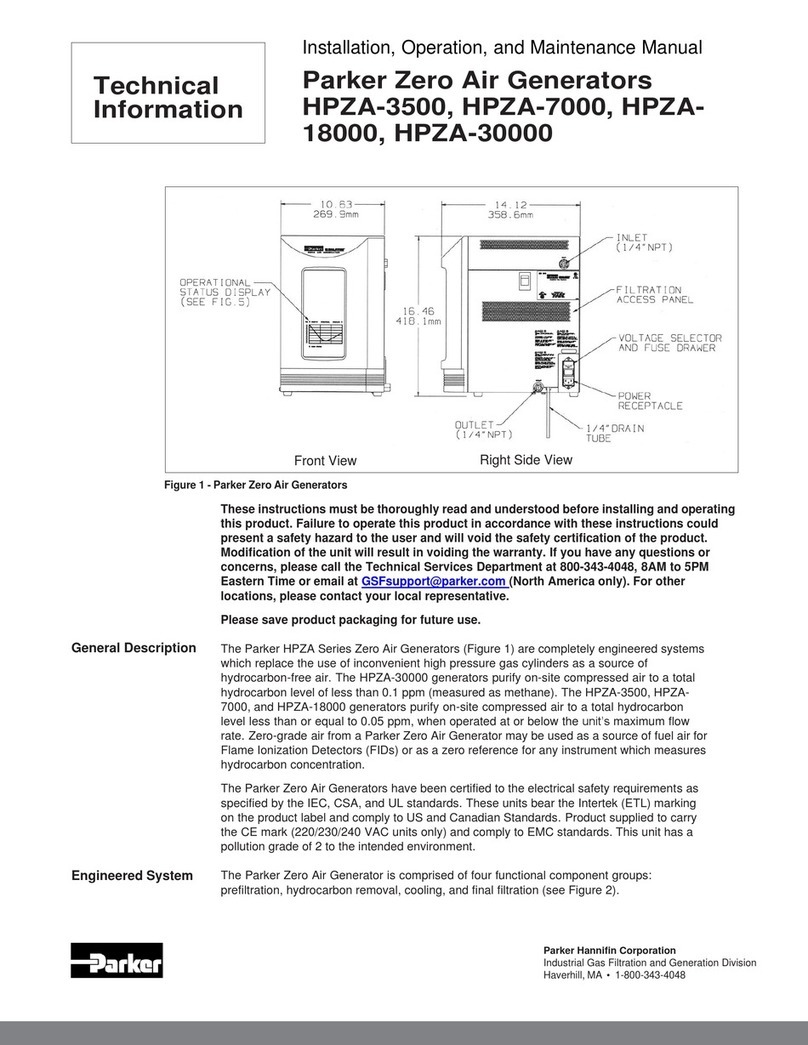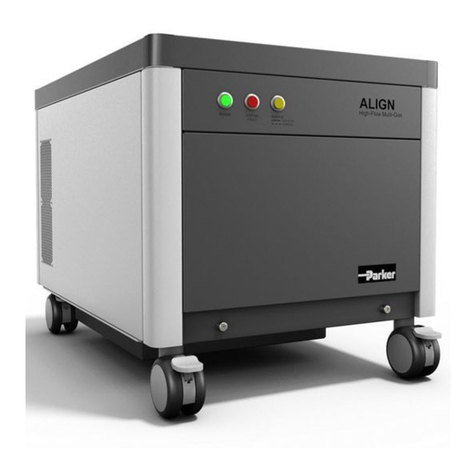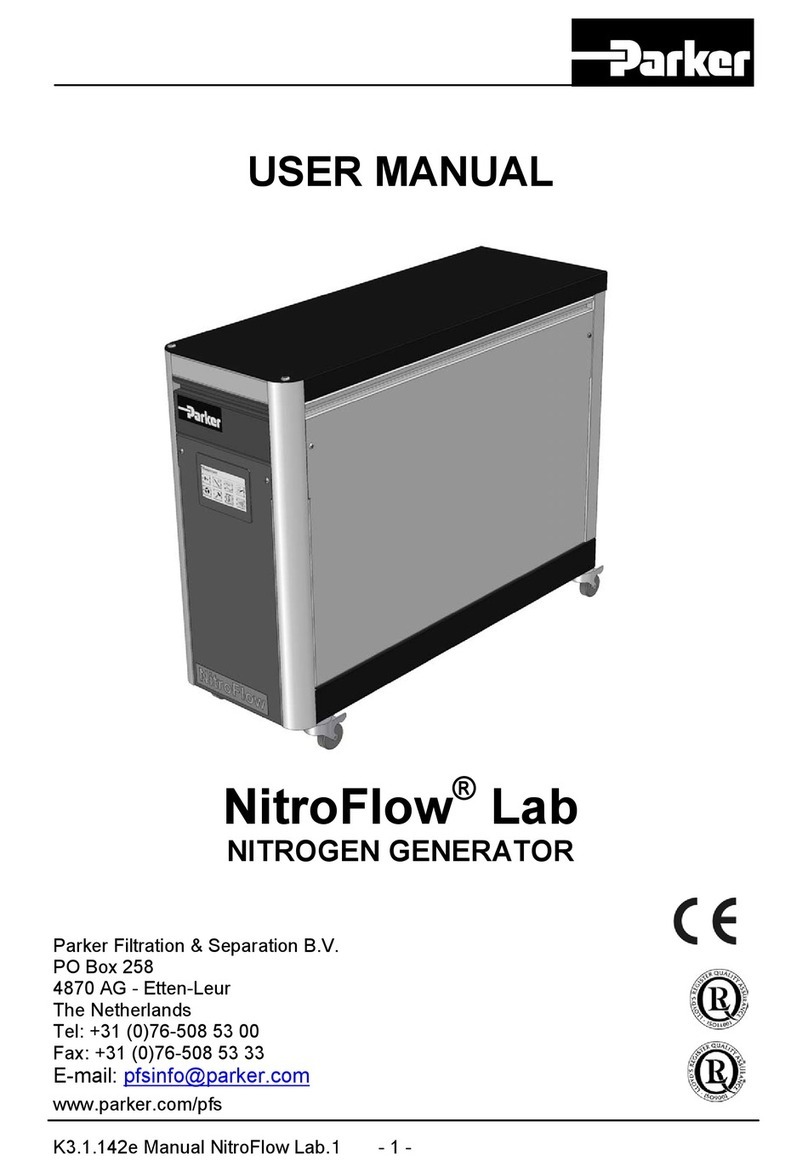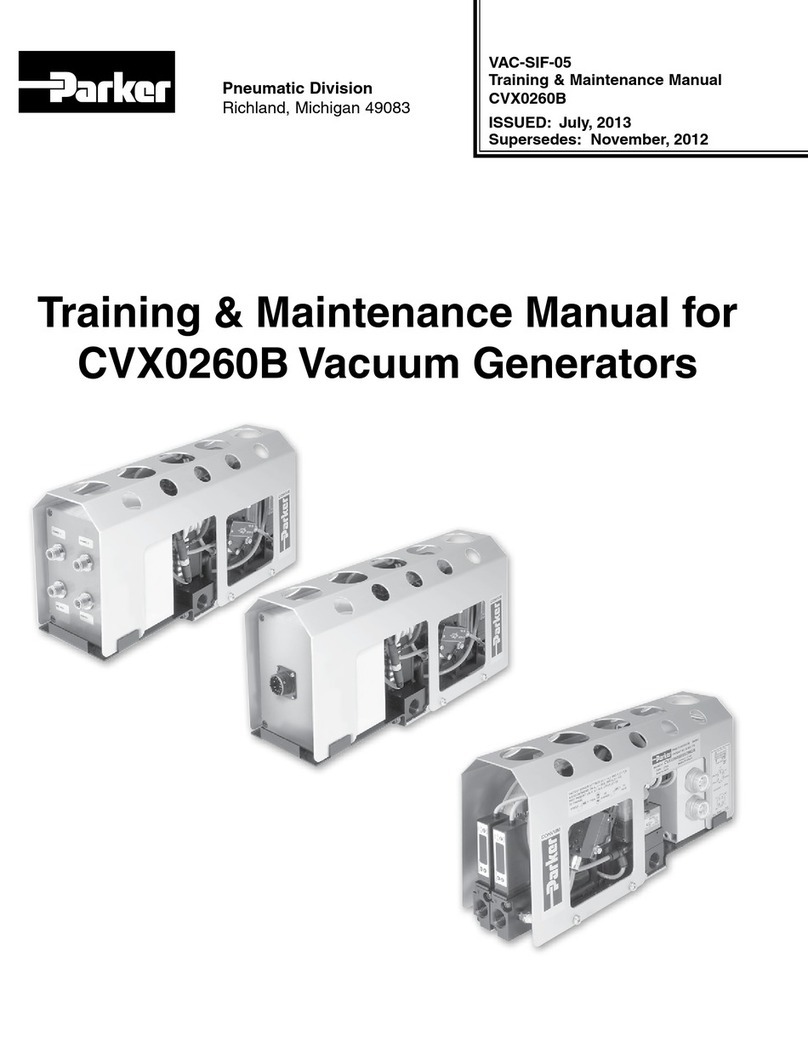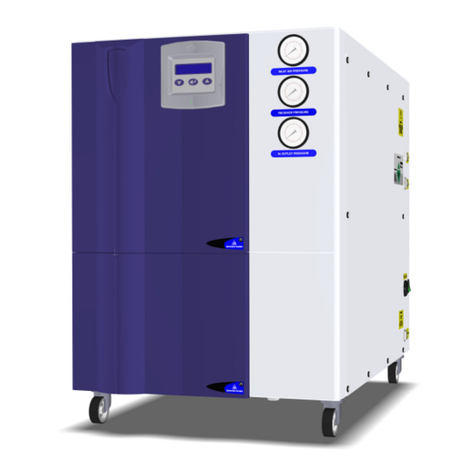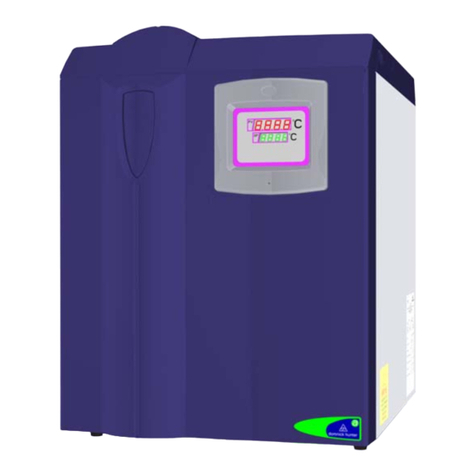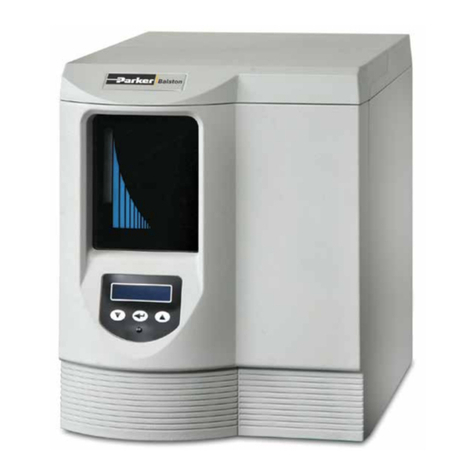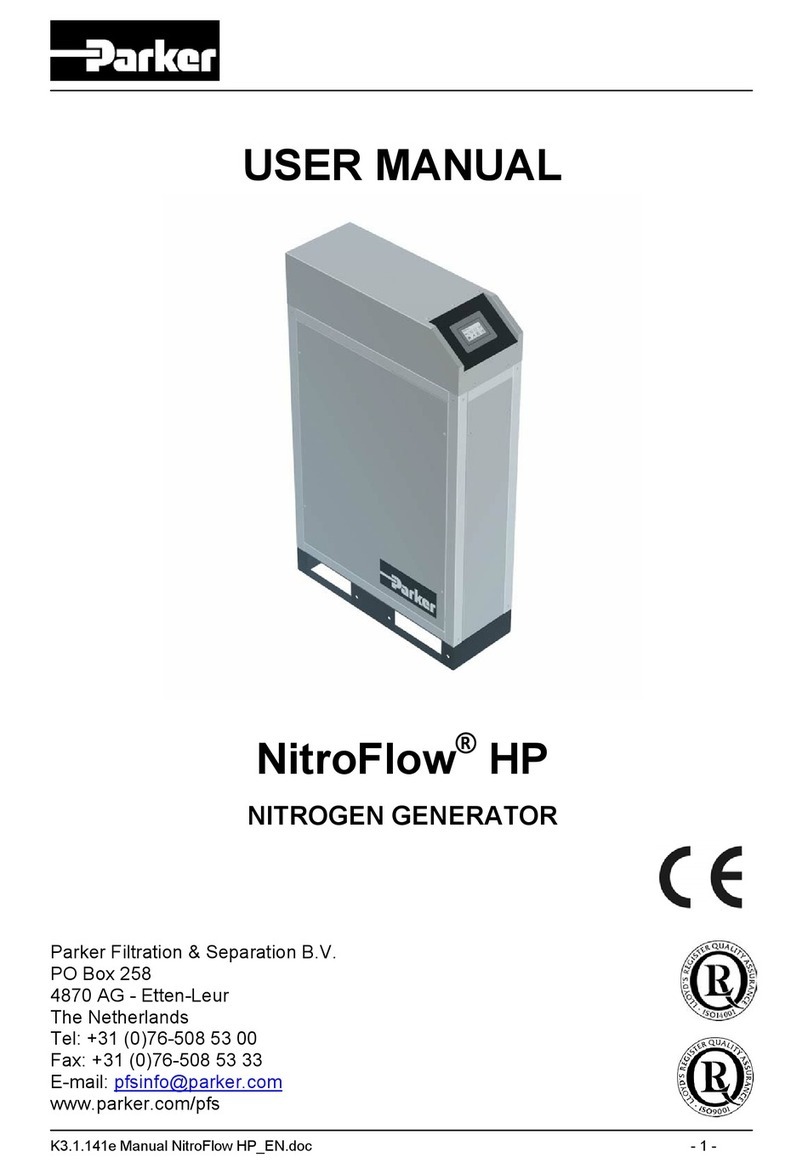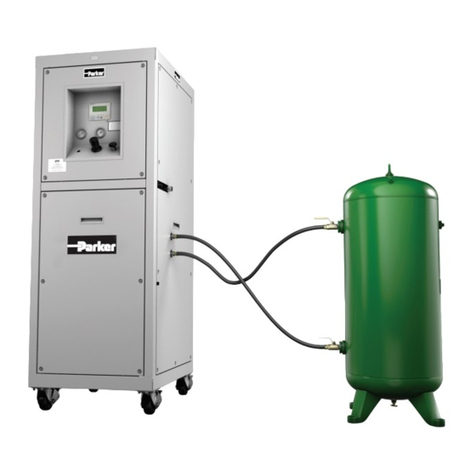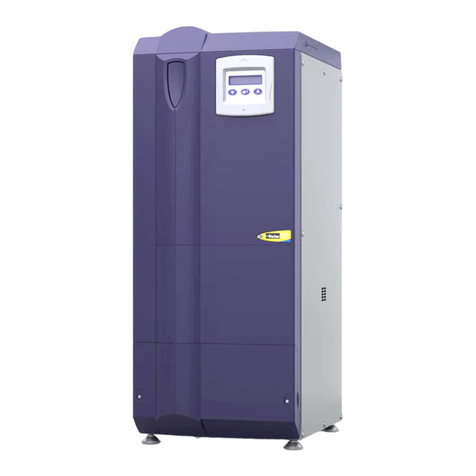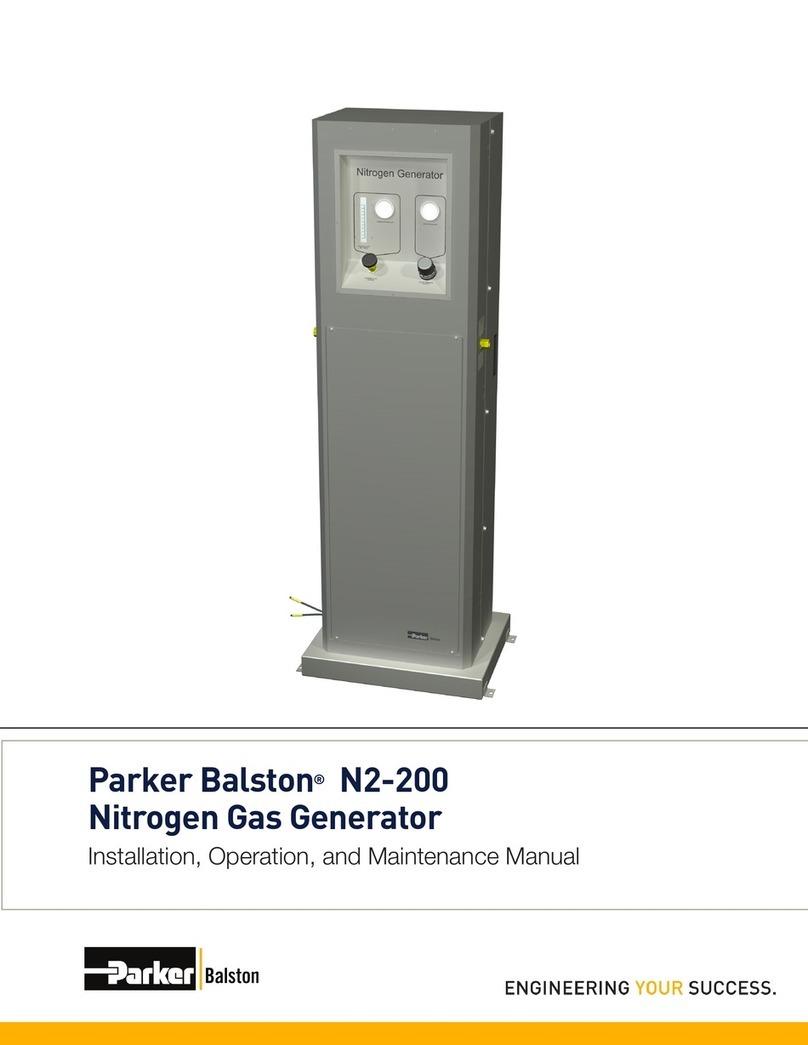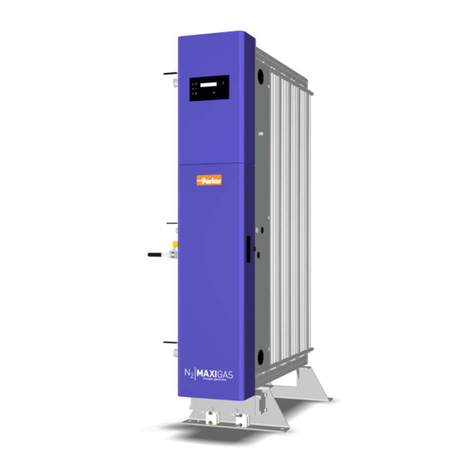
2
NITROGEN GENERATORSINSTALLATION, OPERATION, AND MAINTENANCE MANUAL
TABLE OF CONTENTS
Page
1. WARRANTY.............................................................................................................3
2. SAFETY PRECAUTIONS...........................................................................................4
3. GENERAL DESCRIPTION.........................................................................................5
4. ENGINEERED SYSTEM............................................................................................5
4.1 Prefiltration .......................................................................................................6
4.2. Air Separation ..................................................................................................6
4.3 Final Filtration ....................................................................................................6
4.4 Controls ............................................................................................................6
5. OXYGEN MONITORING ...........................................................................................7
6. INSTALLATION .......................................................................................................7
6.1 Moving..............................................................................................................7
6.2 General.............................................................................................................8
6.3 Location............................................................................................................9
6.4 Utilities..............................................................................................................9
6.5 Installation with a Receiver Tank........................................................................ 10
7. OPERATION ......................................................................................................... 11
7.1 Startup............................................................................................................ 11
7.2 System Adjustment for Desired Outlet Purity...................................................... 11
8. NITROGEN FLOW AT GIVEN OPERATING PRESSURE AND PURITY .......................... 12
9. OPERATION ADJUSTMENT PROCEDURES.......................................................... 14
9.1 Atmospheric Pressure Applications (<10 psig / 0.7 barg).................................... 14
9.2 Elevated Pressure Applications (>10 psig) ......................................................... 15
9.3 Receiving Tank Applications ............................................................................. 16
9.4 Temperature Equilibrium .................................................................................. 16
9.5 Evaluation ....................................................................................................... 17
9.6 System Upsets ................................................................................................ 17
9.7 Shutting Down ................................................................................................. 17
10. MAINTENANCE................................................................................................... 17
10.1 Cleaning........................................................................................................ 18
10.2 Filter Cartridge Replacement .......................................................................... 18
10.3 Activated Carbon Filter Replacement............................................................... 19
10.4 Ordering Information...................................................................................... 19
11. NITROGEN GENERATION SYSTEM SPECIFICATIONS ........................................... 20
11.1 Approximate Inlet Air Consumption at 68°F by Purity and Pressure..................... 20
11.2 Optional Accessories...................................................................................... 21
11.3 Cautions........................................................................................................ 21
12. TROUBLESHOOTING .......................................................................................... 22
